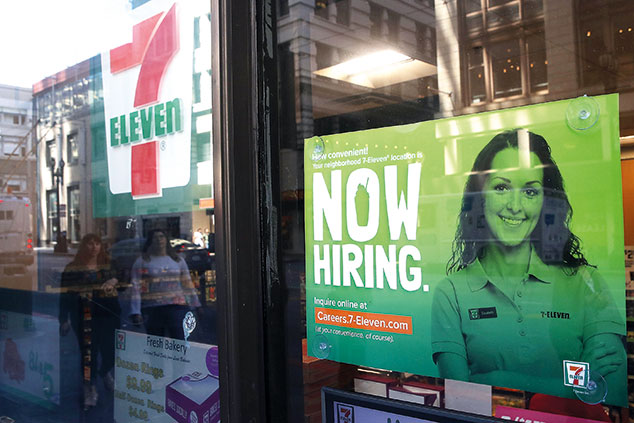
The latest data suggests inflation is gathering strength. The annual rate of consumer price inflation reached an average of 2.6% in the OECD, a club of developed countries, in May. In the eurozone, which not too long ago was expected to slide into deflation and a Japanese-style slump, the headline measure of inflation watched by the European Central Bank stood at 2% in June.
In the US, which sets the tone for world markets, prices were up by 2.9% year-on-year in June, the highest level since 2012. Further rises are in the pipeline, with producer prices going up at their fastest pace in seven years – 3.4%.
No upside for markets
The US labour market continues to tighten, suggesting that workers asking for higher salaries are soon going to give inflation a further fillip. In 2016 there were 1.3 job seekers for each vacancy. Now, there are 0.9 potential employees for each job vacancy, so there are more jobs than job seekers, as Barry Ritholtz of Bloomberg points out. At the height of the financial crisis the ratio was 6.6 to 1.
A sharp jump in wages, says David Rosenberg of Gluskin Sheff, would be “good for pay cheques on Main Street but less so for profit margins on Wall Street”. It amounts to a drag on earnings growth, which is already set to fade as the one-off boost from the Trump administration’s corporate tax cuts dissipates.
If inflation starts to take off, the US Federal Reserve will be forced to raise interest rates more quickly than expected, implying a potentially nasty shock for America’s highly indebted government and companies. Tighter monetary policy will also be an unwelcome adjustment for liquidity-addicted equity markets.
Which sectors will struggle most?
Inflation is always lethal for bonds, since it erodes the real value of the fixed interest they offer. But studies suggest that once inflation eclipses 4%, stocks tend to start struggling too, because not all companies can pass on an increase in their costs to consumers. But higher inflation in times of lower growth – where interest-rate rises would slow a business cycle already past its peak – implies stagflation, as WirtschaftsWoche points out. We could soon be heading back to the 1970s.
A study of US stocks by Standard & Poor’s shows that during this period, oil, gold and defence companies did best, a reflection of their pricing power. Oil explorers, and miners of gold and other precious metals, gained 283% and 253% respectively in real terms. Oddly, considering it was a time to drown one’s sorrows, the alcoholic drinks sector did worst of all. Time to hold onto your gold and pour yourself a good stiff drink.